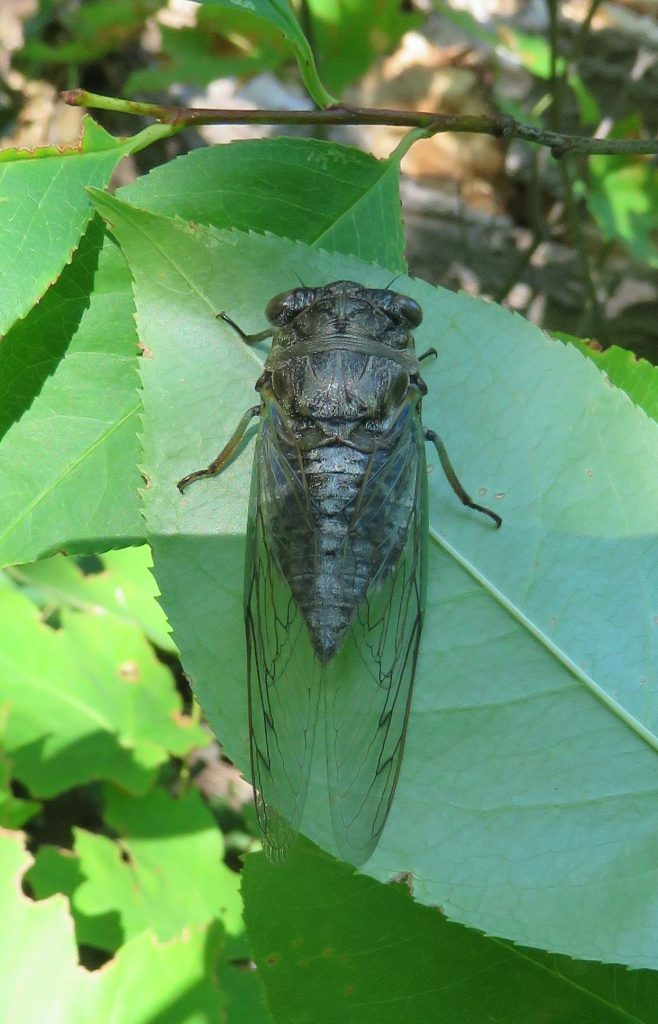What’s the Buzz with Cicadas?

The first buzzing of cicadas in the summer instantly brings what I assume to be some sort of placebo effect: once I hear their humming, instantly, I feel about 10 degrees hotter.
“Summer is here” they buzz in July, and it’s only going to get warmer and louder in the coming months.
The annual cicadas of the dog days of summer are one of the many misunderstood insects that some, if not most people, dislike. Perhaps it’s because their song is tied to the most uncomfortable weather of the year, perhaps its their size and how they buzz by our heads out of nowhere when we are hiking, maybe it is because we learned they suck juices out of trees and are scared they are gargantuan, goliath mosquitoes that have come for us… But in reality, they are simple creatures, here to eat and continue their life cycle, and in the end, isn’t that what we are all trying to do?
The day-to-day of the Dog Days Cicada (that’s an actual name for cicadas… If you want to get fancy, Neotibicen canicularis will also do) does include using their piercing and sucking mouthparts, but this is for tree sap; they have zero interest in human blood, unlike the mosquito and ticks that come out around the same time. This tree sap is the same we boil down in February for our delicious, sugary maple syrup, but during this time of the year, the cicadas are still with us, just underground below our winter boots, feeding off of the sugary fluids in the roots of the trees before we even get to it.
The buzzing and humming of these ear-splitting, insect/kazoo hybrids comes from tymbals, sound producing structures that *click* when they flex and *click* again when they relax, hundreds of times a minute. All these clicks stacked on top of the other create the soundwaves that are amplified by their enlarged trachea, creating a hollow space in their abdomen that gives this energy a chance to “breathe” and reach their deafening, decibel onslaught.
These symbols for summer also signify “change” and metamorphosis- just as the Dog Days Cicada reach the end of their life cycle, stop singing, and start anew, storing eggs away in the branches of the trees, so does the northern hemisphere end the sweltering, torrid, and excruciating dog days of summer, metamorphosing into the autumn stage of its yearly life cycle.
How have you changed this summer? Will you metamorphose during your last days of sweltering summer and start something new in the fall?
by Joe Scharf, Interpretive Naturalist

